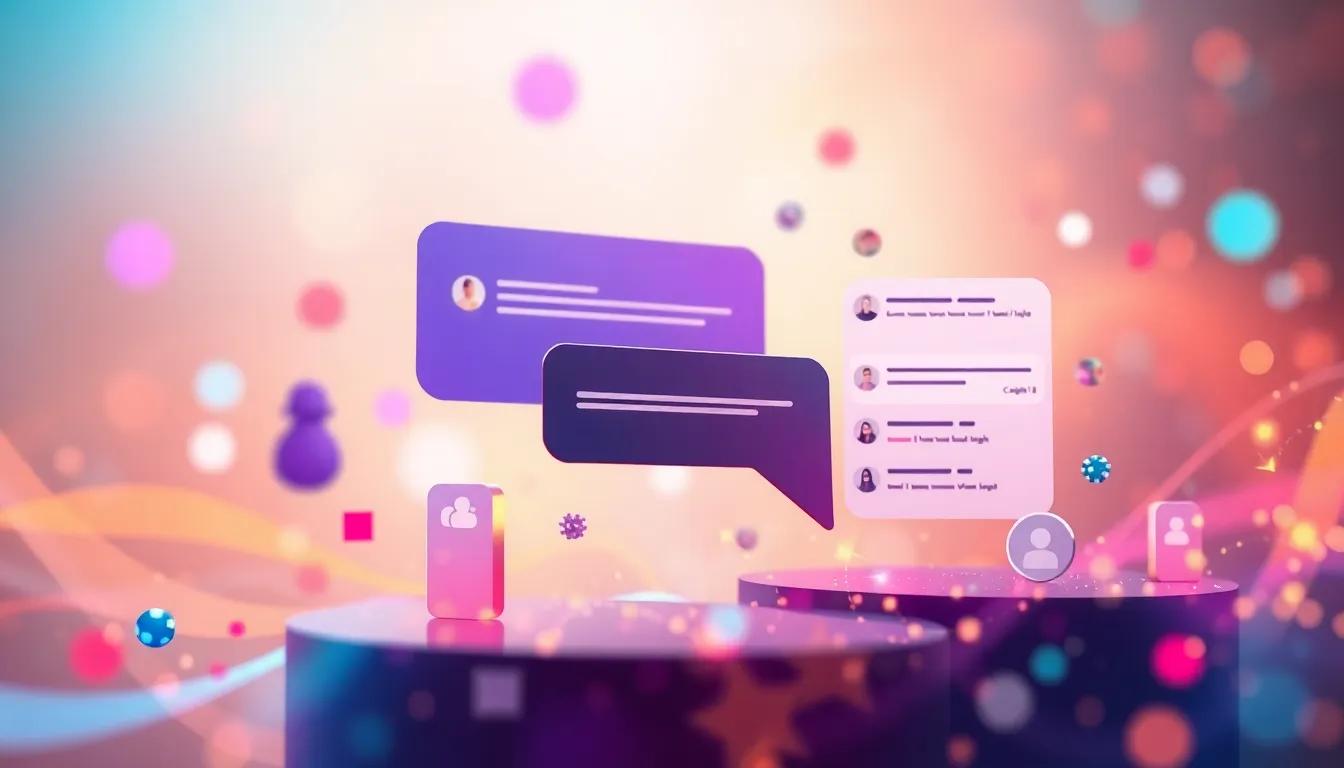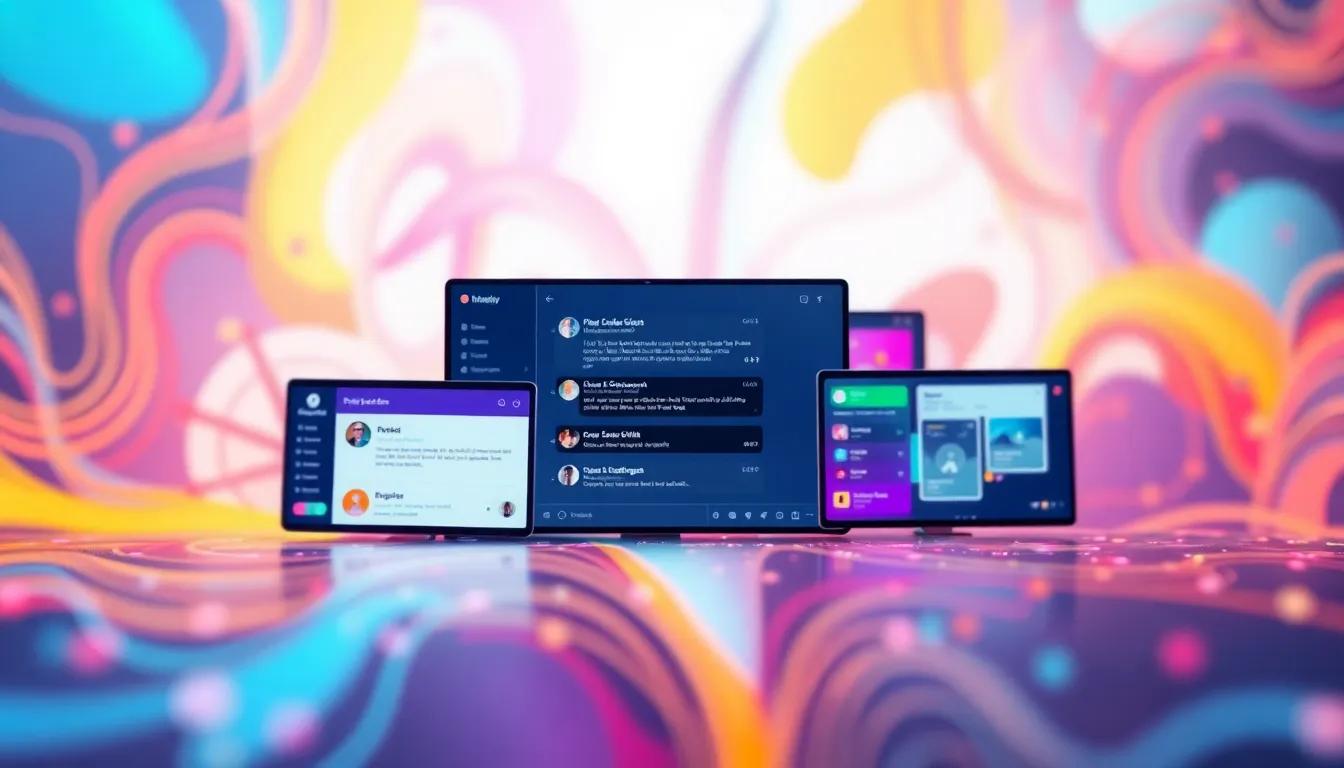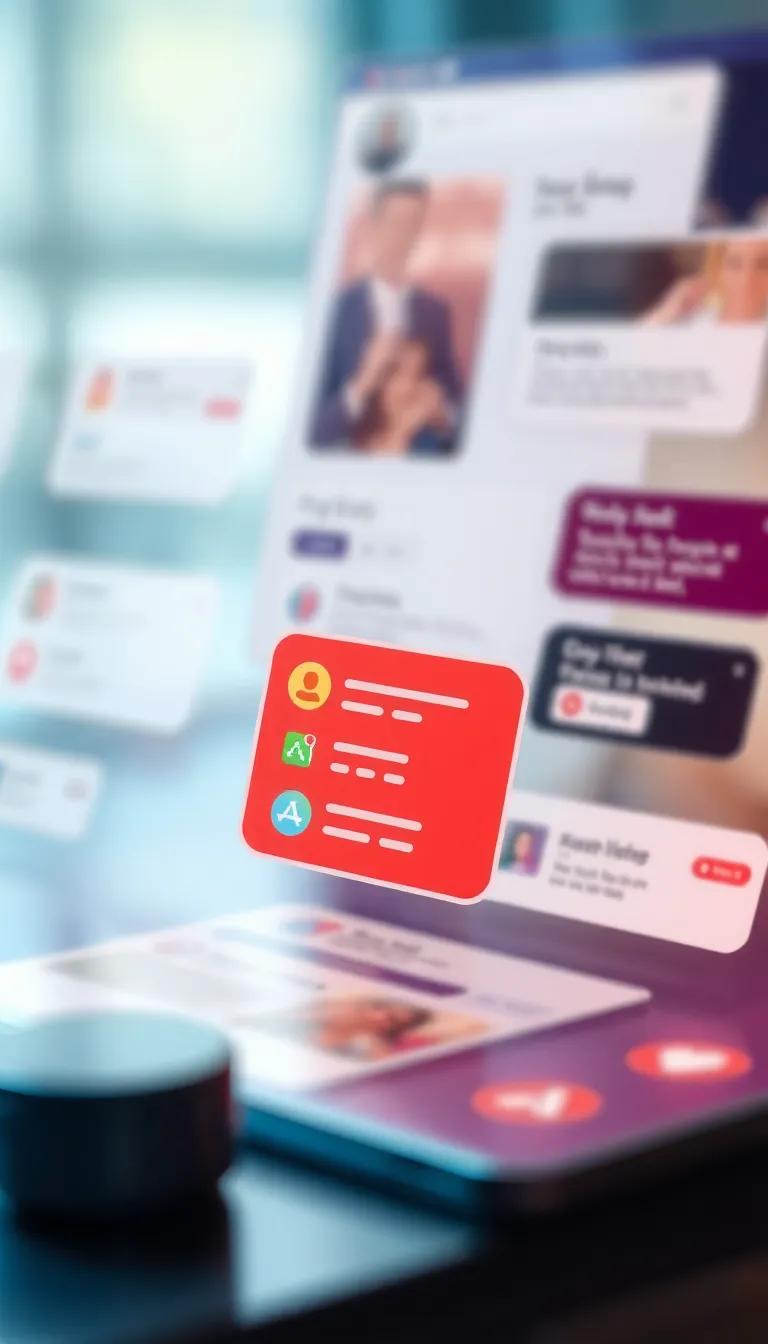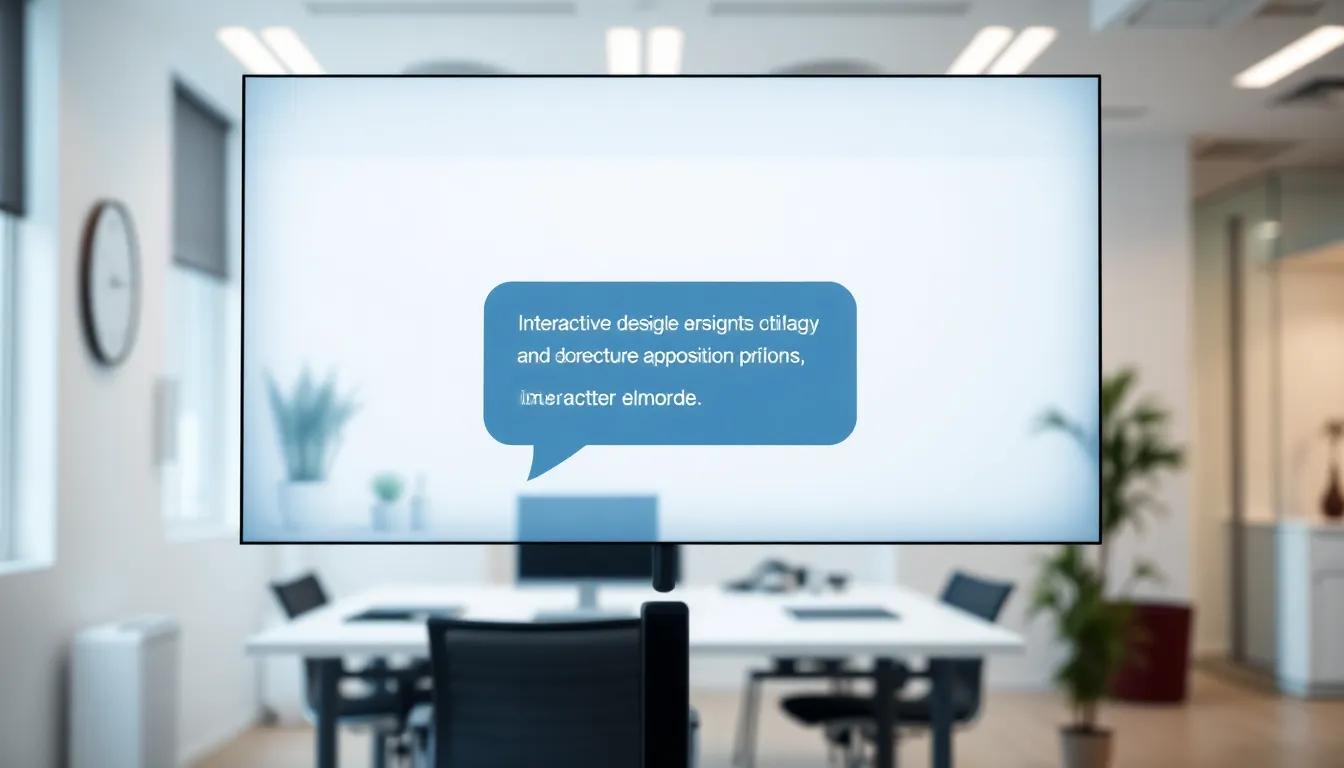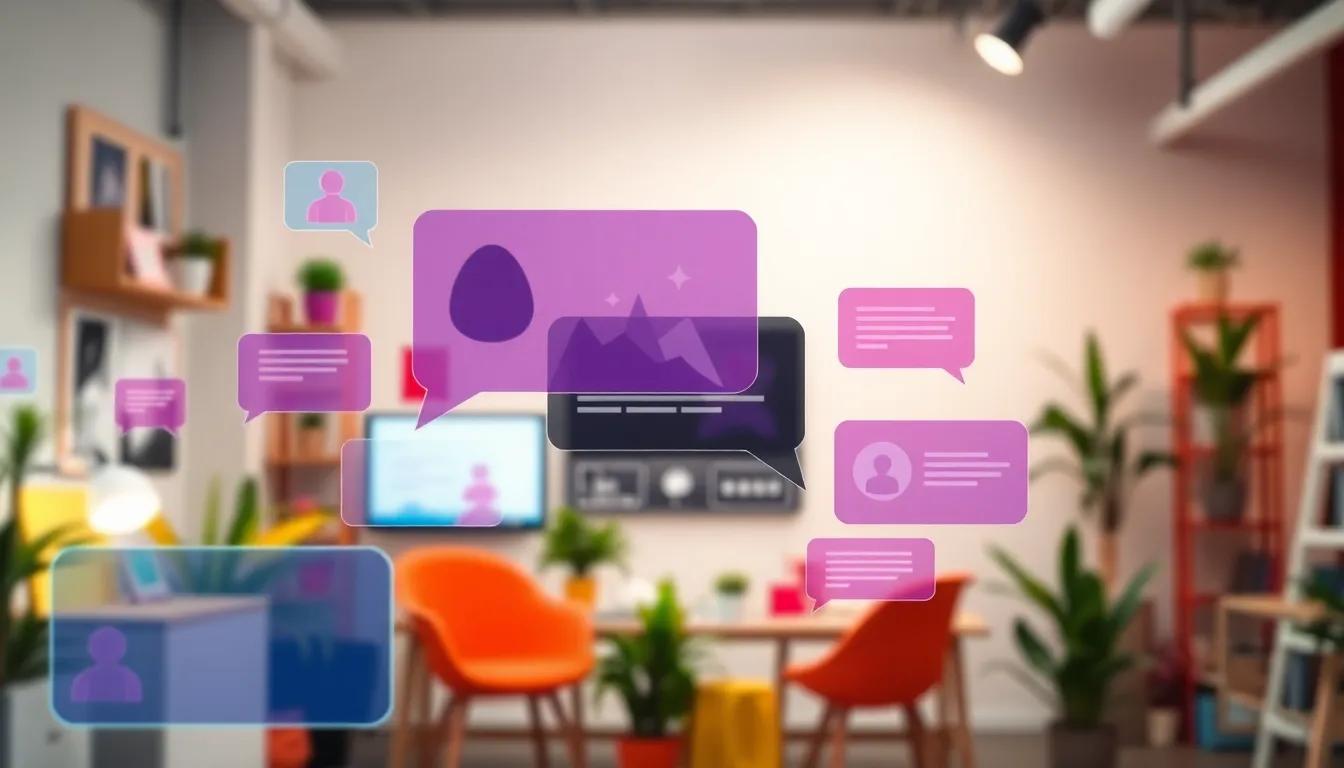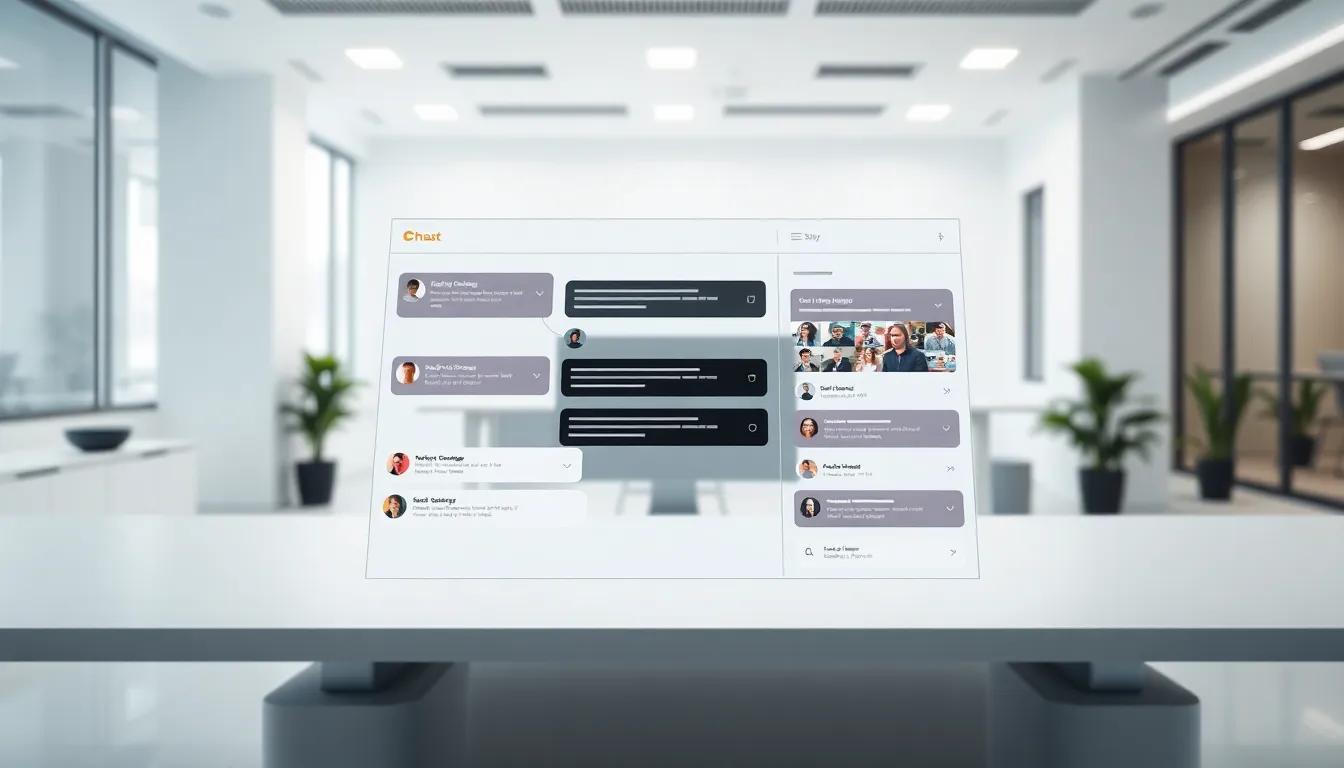Introduction
The importance of effective chat design cannot be understated. As websites evolve into dynamic platforms for user interaction, innovative chat design ideas play a pivotal role in enhancing user experience and engagement. From chatbots powered by AI to customer service interfaces, efficient chat designs can not only boost user satisfaction but also drive conversions for businesses. Understanding the fundamental principles of chat design is essential for creating intuitive and user-friendly interactions that resonate with visitors.
Focusing on trendsetting techniques that have proven to be effective in engaging users. We will delve into the various elements that contribute to successful chat implementations on websites, drawing attention to issues such as usability, aesthetics, and functionality. By examining these components, we aim to equip readers with the knowledge needed to enhance their website chats, making them more impactful and user-centric.
Understanding the Basics of Chat Design Fundamental Principles for Effective Online Interactions
Effective chat design is foundational for creating impactful online interactions. At its core, chat design must address three fundamental principles: usability, accessibility, and aesthetics. Each aspect plays a pivotal role in crafting a seamless and engaging experience for users navigating website chats.
Usability focuses on how easy and intuitive a chat interface is for users. A well-designed chat should facilitate quick access to information, allowing users to initiate conversations effortlessly. Key elements of usability include clear navigation, logical flow, and responsive design. Incorporating user feedback in the design process ensures that functionality aligns with user expectations. For instance, using conversational prompts and commonly understood language can enhance the chat experience by alleviating confusion and promoting interaction.
Accessibility is another vital principle that ensures chat interfaces cater to all users, including those with disabilities. A chat design must consider visual impairments by providing screen reader compatibility and incorporating keyboard navigation. Furthermore, color choices should account for color blindness, ensuring that critical information is distinguishable through visual contrast and text organization. This inclusivity not only broadens the chat’s reach but also cultivates a welcoming environment for all visitors.
The visual appeal of a chat interface can significantly affect users’ perceptions and willingness to engage. Consistent branding, a clean layout, and eye-catching elements that align with the website’s overall design contribute to a positive user experience. Thoughtfully placed animations or visual cues can enhance interaction and guide users through the conversation while maintaining engagement.
User-centered design is at the intersection of usability, accessibility, and aesthetics. By placing users’ needs and behaviors at the forefront of the design process, businesses can create chat solutions that foster connection and understanding. Employing techniques such as user personas, journey mapping, and usability testing can refine chat design, ensuring it resonates with its intended audience. This holistic approach to chat design creates a compelling and approachable communication platform, ultimately leading to more impactful and meaningful interactions.
The Role of AI in Modern Chat Design
Integrating Artificial Intelligence to Enhance User Interactions
The integration of artificial intelligence in chat design is revolutionizing the way users interact with websites. AI-driven chatbots and support systems facilitate seamless communication, bridging the gap between businesses and their customers. One of the most significant advantages of employing AI in chat design is the ability to provide real-time responses, ensuring that users receive the information they need without delay. This immediacy is crucial in creating a positive user experience, as users appreciate swift solutions to their inquiries.
AI chatbots can learn from conversations and adapt their responses based on user behavior and preferences. This personalization enhances user interaction by making the exchange feel more intuitive and tailored to individual needs. By analyzing data from previous interactions, these AI systems can predict the most relevant information a user might require, resulting in a more fluid engagement. The incorporation of machine learning algorithms allows chatbots to continuously improve their performance over time, boosting their capability to resolve issues with increasing accuracy.
Benefits of AI-Driven Chatbots in Communication Enhancement
One of the key benefits of AI-driven chatbots is their capacity to handle a high volume of inquiries simultaneously. This capability alleviates the pressure on human agents, enabling them to focus on more complex issues that require human empathy and judgment. Consequently, businesses can maintain a higher level of customer satisfaction, as users are not left waiting long periods for assistance. Furthermore, AI chatbots can operate 24/7, ensuring that users receive support at any time, adding to the overall accessibility of the service.
AI chatbots also facilitate multilingual support, allowing businesses to reach a broader audience. By recognizing and responding in various languages, these systems break down language barriers, creating an inclusive user experience. Implementing AI-driven solutions in chat design can lead to cost reductions in customer support, as AI technology often serves as the first point of contact before escalation to human representatives is necessary.
The integration of artificial intelligence in chat design significantly enhances user interactions. By leveraging the strengths of AI, businesses can create effective communication channels that not only address customer needs swiftly but also evolve based on user behavior, ultimately leading to improved satisfaction and enhanced engagement.
Crafting Effective Chat Conversations Engaging User Participation through Natural Dialogue
Techniques for Crafting Engaging Conversations
Creating impactful chat conversations requires a balanced blend of strategy and creativity. The art of crafting engaging dialogues hinges upon fostering user participation and ensuring that interactions feel organic rather than scripted. One effective technique is to employ open-ended questions that invite users to share their thoughts, preferences, or experiences. For instance, instead of asking, “Would you like to know more about our services?” a more engaging approach would be, “What challenges are you currently facing that we might help you with?” This encourages users to elaborate and provides valuable insights into their needs.
Another essential aspect is to maintain a consistent and relatable language tone. Aligning the chat’s voice with the overall branding allows users to feel a connection. A friendly and conversational tone can put users at ease, making them more likely to engage in dialogue. This is particularly effective when addressing sensitive topics where empathy and understanding are necessary. Incorporating humor or light-heartedness where appropriate can also break the ice and create a more enjoyable user experience.
Keeping Conversations Natural and Dynamic
To keep conversations feeling natural, it is vital to incorporate active listening techniques within the chat. This means acknowledging user responses appropriately and following up with relevant questions or statements. For example, if a user mentions a specific issue, responding with, “That sounds frustrating! Could you tell me a bit more about how that has affected your workflow?” not only validates their concern but also reinforces a sense of dialogue rather than a one-sided interaction.
Integrating contextual elements into the conversation, such as using information previously gathered from the user, can create a seamless experience. Whenever a user mentions something during the chat, referencing it later in the conversation demonstrates attentiveness and can deepen the connection. For example, remarking, “Earlier, you mentioned that time management has been a concern; do you find our resources helpful?” brings a personalized touch to the interaction.
The aim is to craft chat conversations that shape a collaborative and engaging experience, leading users to feel not only heard but also valued. By employing these techniques—open-ended questions, an accessible language tone, active listening, and contextual awareness—businesses can elevate their chat experiences and foster meaningful interactions. This approach sets the stage for deeper engagement and satisfaction, preparing users for future interactions, including those optimized for mobile interfaces.
Mobile Optimization for Chat Interfaces Best Practices for Enhanced Usability
In the sphere of chat design, mobile optimization holds an undeniable significance. With the vast majority of users engaging with websites via mobile devices, ensuring that chat interfaces function seamlessly across varying screen sizes is critical. By utilizing responsive design principles, designers can create chat experiences that not only look good but also enhance usability for mobile users.
Responsive Design Principles in Chat Interfaces
Responsive design hinges on fluid grids, flexible images, and media queries. A chat interface that adapts to different screen resolutions ensures that it remains accessible and engaging on any device. Here are several innovative techniques to achieve an optimized mobile chat interface:
- Adaptive Layouts: Implement a layout that dynamically adjusts based on the user’s screen size. This might include using collapsible menus or repositioning chat elements to prioritize essential features for smaller displays.
- Touch-Friendly Elements: Designing buttons and interactive elements that are thumb-friendly is key. Adequate spacing between options not only prevents accidental clicks but also improves the overall user experience.
- Minimalist Design: A clutter-free interface is particularly vital on mobile. Presenting only the necessary information and features allows users to focus on their conversation without distraction.
- Voice Input Features: Integrating voice input capabilities can enhance user interaction, especially when typing is cumbersome on smaller keyboards. Voice-to-text options can empower users to quickly articulate their needs.
- Instant Load Times: Mobile users are often on the go, and a slow loading chat interface can lead to frustration. Optimizing backend processes and reducing the size of chat elements can vastly improve load times.
Enhancing Usability Through Accessibility Features
Accessibility must also be at the forefront of mobile chat design. Consider implementing features such as text resizing options, high-contrast themes for readability, and screen reader compatibility. These adjustments not only cater to users who may require additional support but also enrich the overall user experience.
Mobile optimization for chat interfaces is indispensable in creating an engaging and effective digital environment. By applying responsive design principles and focusing on user-friendly features, organizations can significantly enhance the usability of their chat interactions. These considerations pave the way for meaningful user engagement, setting the stage for richer conversational experiences that resonate well beyond initial interactions.
Analytics and Performance Measurement in Chat Design
Understanding the Role of Analytics in Chat Effectiveness
In the pursuit of impactful website chats, the implementation of analytics serves as a cornerstone for measuring interaction effectiveness. Analytics tools track user interactions in chatbots and live chats, revealing invaluable insights that can shape future design strategies. By understanding user behaviors, preferences, and pain points, organizations can make data-driven decisions to enhance the overall chat experience, ultimately driving user engagement and satisfaction.
Key performance indicators (KPIs) play a pivotal role in evaluating chat success. These metrics provide actionable data that can guide optimization efforts. Some essential KPIs include:
- Engagement Rate: This metric quantifies how many users interact with the chat feature versus the total site visitors. A high engagement rate indicates that users find the chat valuable.
- Response Time: The speed at which users receive answers. Short response times contribute significantly to user satisfaction.
- Conversion Rate: This calculates the percentage of chat interactions that lead to desired actions, such as purchases or sign-ups, showcasing the chat’s efficacy in achieving business goals.
- User Retention: Measuring how often users return to the chat can indicate the perceived value and effectiveness of the chat interactions.
- Sentiment Analysis: Analyzing the tone of user interactions helps in understanding user satisfaction and potential areas for improvement.
Leveraging Analytics for Continuous Improvement
The journey of refining chat experiences should be continuous, fueled by insights gained from analytics. Regularly reviewing performance data allows businesses to identify trends, uncover inefficiencies, and pinpoint successful engagement tactics. For example, if analytics reveal that users frequently drop off before completing a purchase following a chat interaction, it may warrant a revisit of conversation scripts or provider responses to better address user concerns.
A/B testing different chat designs, scripts, or functionalities enables companies to measure which variations yield higher engagement or conversion rates. Engaging in iterative design based on analytical feedback promotes a responsive chat environment tailored to user needs and preferences.
As the foundation of impactful website chats, effective analytics not only empowers businesses to evaluate their current chat performance but also facilitates the evolution of chat design. Ultimately, harnessing analytics and embracing a culture of performance measurement leads to enhanced online interactions, culminating in a more significant user experience.
Integrating Chat Design with Overall User Experience
Significance of Integration During User Journey Phases
Integrating chat design effectively within the overall user experience is pivotal for enhancing online interactions. A well-crafted chat interface goes beyond mere functionality; it influences user perceptions and engagement throughout various phases of their journey on a website. Each phase presents unique opportunities for chat to facilitate interactions, support users, and drive conversions.
At the awareness stage, where users initially explore a website, chat can serve as an interactive guide. An inviting chat window can proactively engage visitors, offering assistance or information without being intrusive. For example, a friendly greeting coupled with suggestions based on user behavior can significantly improve the initial interaction. Implementing timed prompts or utilizing chatbots to answer frequently asked questions can also lead to a positive first impression.
Moving on to the consideration phase, users are weighing options and seeking in-depth information. Here, chat plays a significant role as a personalized support tool. Representatives or AI-driven chatbots can deliver tailored recommendations, address specific inquiries, and provide resources that directly align with users’ interests. Integrating features like product comparisons or user reviews through chat can enrich the decision-making process and foster trust.
During the conversion phase, when the user is ready to make a purchase or take an action, seamless chat interactions can significantly lower barriers to completion. Real-time assistance can alleviate uncertainties that may arise at this final stage. For example, addressing concerns about payment security or shipping times through instant replies can ensure a smooth transition from intention to action. Furthermore, integrating chatbots to facilitate the checkout process, such as filling in customer information, can expedite proceedings, enhancing overall satisfaction and reducing cart abandonment rates.
Chat as a Continuous Engagement Tool
Beyond the immediate user journey, chat can also participate in post-interaction engagement. Following up with users after their visit, via personalized messages or feedback requests through chat, fosters a sense of community and invites them to return. This post-engagement not only strengthens relationships but also gathers valuable insights on user experiences, which can inform future improvements in both chat functionality and overall website design.
Integrating chat design throughout the user journey is not merely an enhancement; it is a strategic maneuver that enriches the online experience, supports user needs at every phase, and ultimately leads to greater satisfaction and increased conversions.
Future Trends in Chat Design Shaping User Expectations and Experiences
Innovative Chat Design Ideas for Transformative User Engagement
As technology progresses, the landscape of chat design continues to evolve, driven by emerging technologies and changing user expectations. These trends reflect a shift towards more personalized, seamless, and intelligent interactions, ultimately aiming to enrich the online chat experience for users.
One notable trend is the integration of artificial intelligence (AI) and machine learning in chat interfaces. These technologies enable chatbots to learn from user interactions, providing more accurate responses and suggestions. This capability not only enhances the user experience but also empowers businesses to deliver tailored content and solutions based on individual user behavior and preferences. The future will likely see chatbots that can predict user intents, thereby offering proactive assistance rather than reactive responses.
The use of natural language processing (NLP) is becoming increasingly sophisticated. As NLP algorithms advance, chats will be able to comprehend and engage in complex conversations, easily managing varied dialects and sentiment analysis. This appreciation for context will enable bots to respond more naturally, making interactions feel less robotic and more human-like, thereby fostering deeper connections with users.
Another significant shift is the emphasis on rich media within chat platforms. Rather than limiting interactions to text, future chat designs will incorporate multimedia elements, such as videos, images, and interactive buttons. This approach not only enriches the user experience but also keeps users engaged, offering a more dynamic way to communicate information and capture attention.
Privacy and security will also play a central role in future chat designs. As users become increasingly aware of data privacy issues, chat systems will need to incorporate robust security measures and transparent data practices to build trust. Users will expect to know how their data is being utilized and protected, making confidentiality a paramount aspect in chat design.
The rise of voice-activated chat systems signifies a major shift in user interactions. With the growing prevalence of smart devices, users will increasingly prefer initiating chats through voice commands. Designing chats to cater to this preference will open new channels of communication, making it essential for businesses to adapt and innovate.
In view of these evolving trends, businesses must remain agile, continually reassessing their chat designs and strategies to meet the expectations of modern users while leveraging the potential of emerging technologies.
Conclusions
The evolving nature of chat design reflects the growing emphasis on user experience in digital interactions. By adopting innovative chat design ideas, businesses can not only increase user engagement but also foster a sense of loyalty among their customers. The insights captured throughout this article demonstrate that effective chat design is not just about aesthetics; it encompasses usability and responsiveness, ensuring that users find the interactions meaningful and beneficial.
Successful chat implementations can serve as powerful tools for communication and customer service, bridging the gap between users and businesses. By focusing on innovative chat design ideas and continually adapting to user needs and preferences, companies can create impactful web interactions that resonate with their audiences and drive business success.

